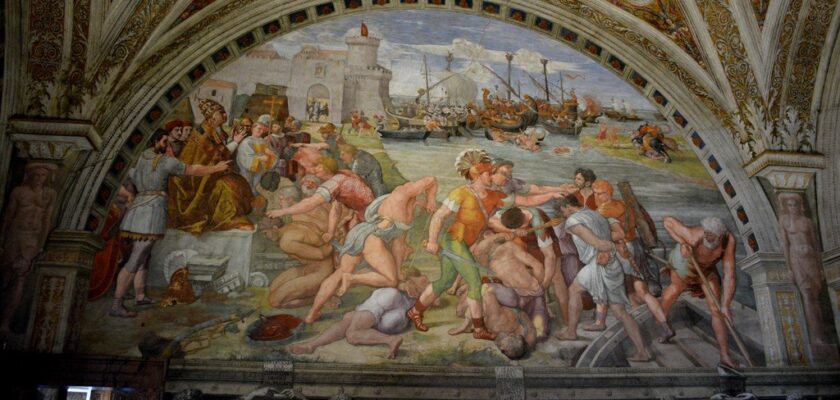Stanze di Raffaello
Raphael’s Stanze are four rooms of the papal palace that were decorated over a period of 13 years (from 1507 to 1520) by Raphael, his teacher Perugino and their pupils, first commissioned by Pope Julius II, then by Pope Leo X.
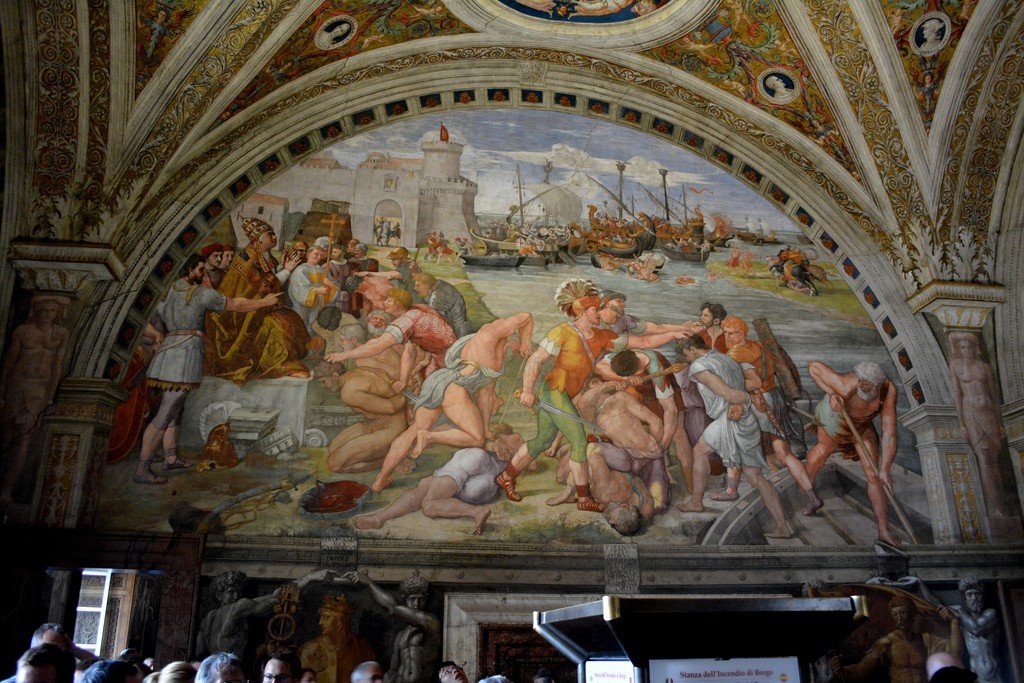
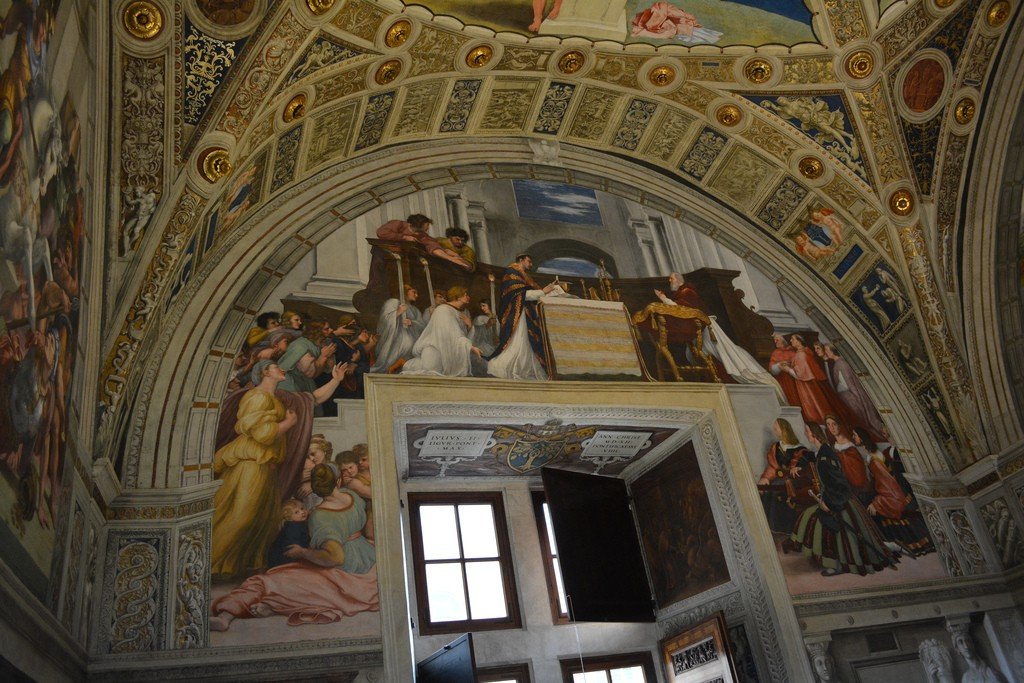
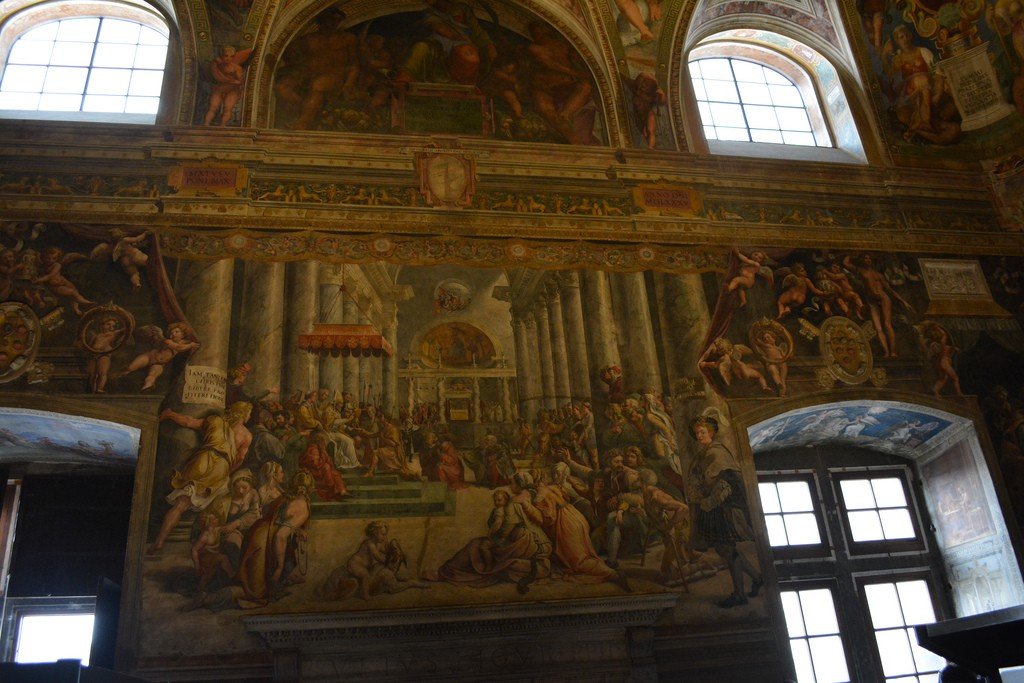
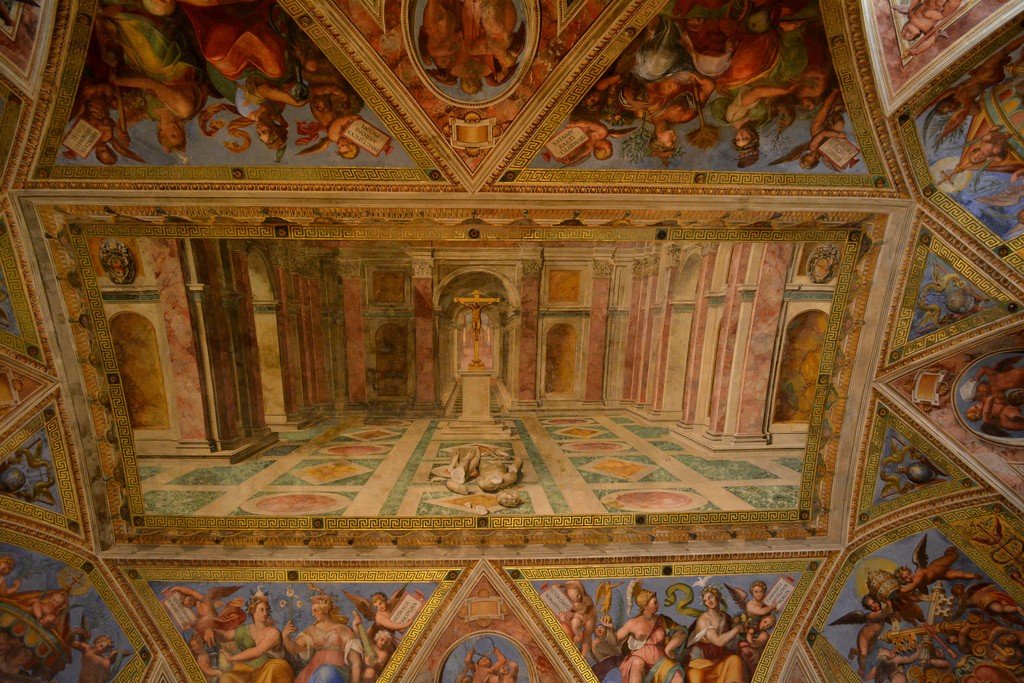
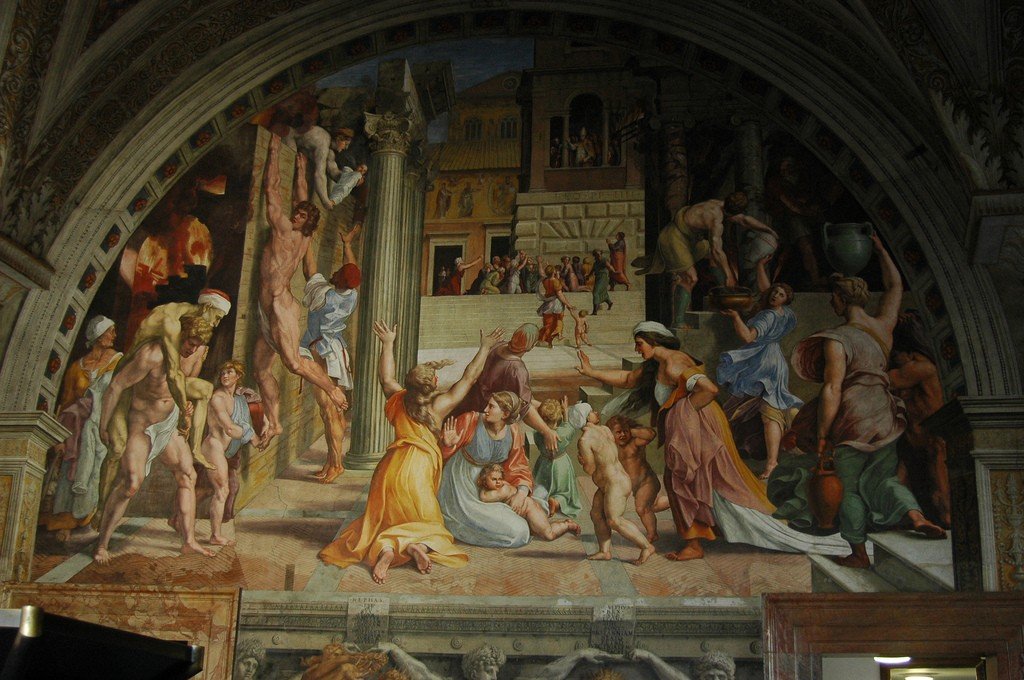
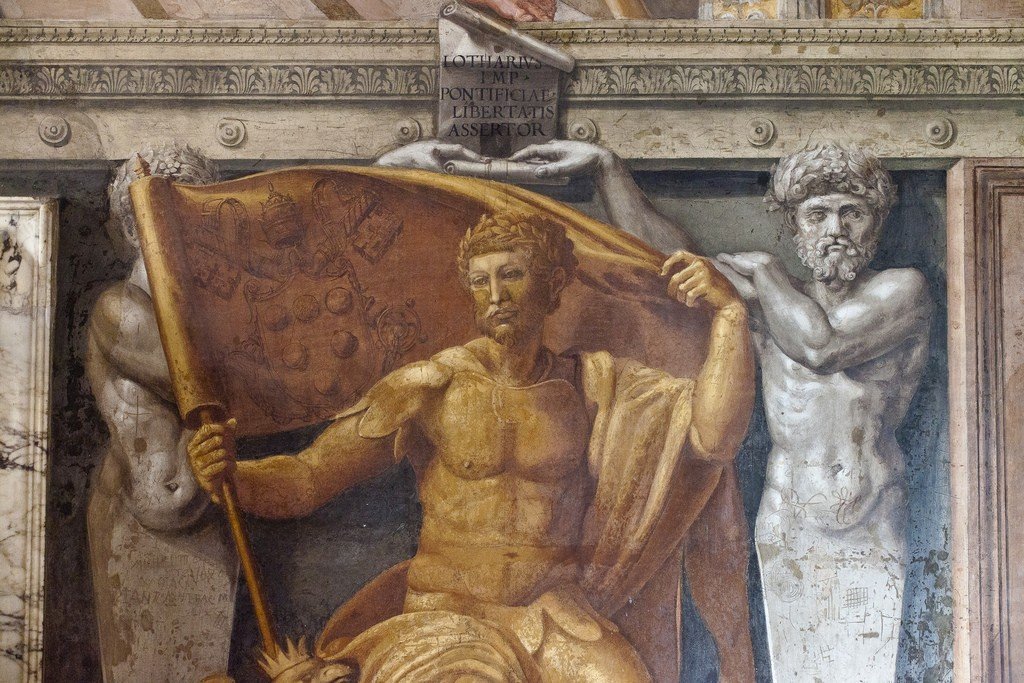
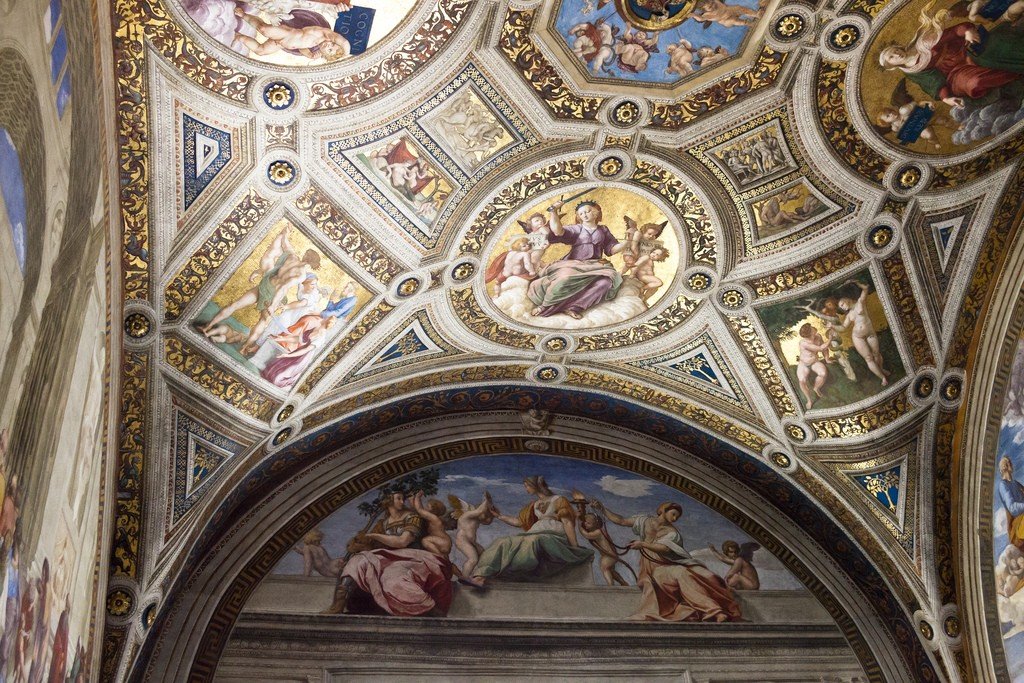
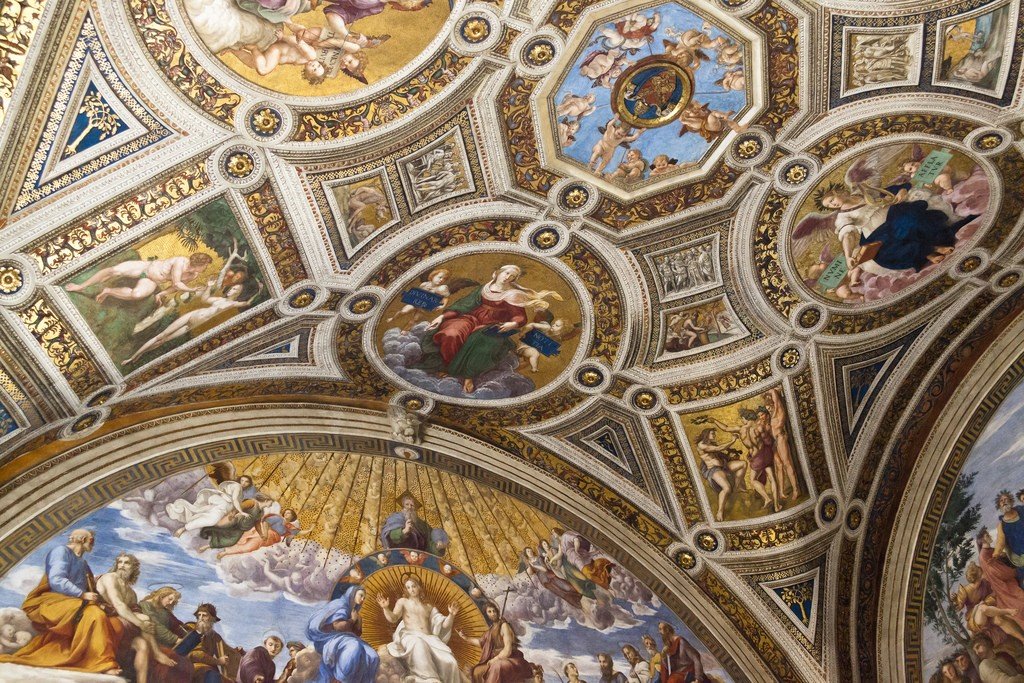
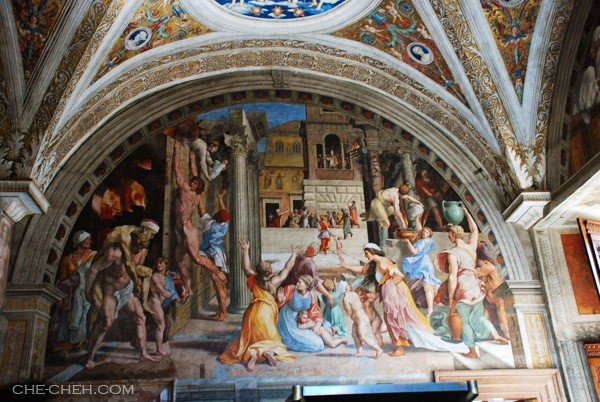
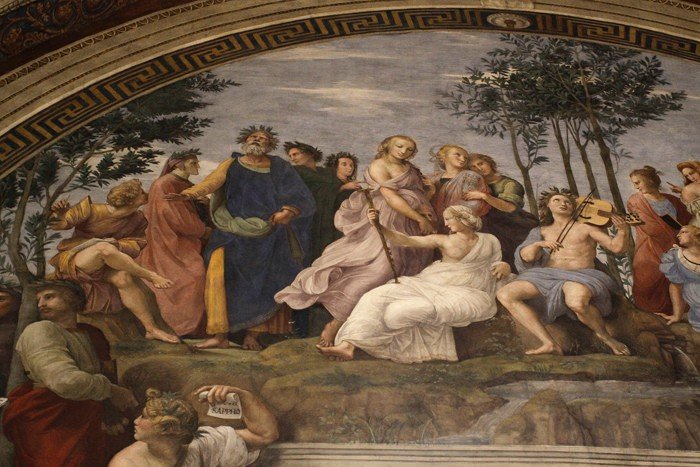
General information
The Hall of Constantine was decorated with frescoes after Raphael’s death. From his sketches, Francesco Penny and Giulio Romano painted pictures of events from the life of Emperor Constantine.
The paintings in the Stanza d’Elidoro tell of God’s miraculous patronage of the papacy, religion, apostles and the Church. Raphael’s fresco The Liberation of Peter, the artist’s first “night scene,” was painted with astonishing skill.
The murals in the Stanza della Signatura, the pope’s study, represent the spiritual spheres of human activity: poetry, theology, philosophy and justice. The frescoes are considered a masterpiece of the High Renaissance. The fresco “School of Athens” depicts the great ancient Greek philosophers: in the center are Plato and Aristotle, to the left of Plato is Socrates, in the foreground below is Pythagoras surrounded by his students, almost in the center with a circular in his hands sits Euclid, and to the right stand the great geographer Ptolemy and astronomer Zoroaster with a celestial globe. Diogenes lies on the steps, and a seated Heraclitus rests his back on a marble block. Raphael also depicted himself – in the guise of one of the young men talking to Ptolemy and Zoroaster.
.In the Stanza dell Incendiodi-Borgo, the fresco “Fire in Borgo” depicts Pope Leo IV stopping a fire that occurred in 847 in the residential quarter of St. Peter’s by blessing the fleeing crowd with the sign of the cross.
.Through the vestibule next to the Hall of Constantine, one can enter the Chapel of Nicholas V, painted around 1447-1550. Fra Angelico. The frescoes depict scenes from the lives of St. Lawrence and St. Stephen.The six rooms of Pope Alexander VI Borgia were painted with frescoes between 1492-1495 under the direction of Pinturicchio. His private chambers contain part of a collection of modern religious art, which includes all the art of the 20th century.
Most of the works are in the rooms under the Sistine Chapel.